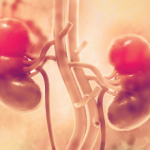What, aside from access to good healthcare, could account for the impact of race/ethnicity and low socioeconomic status on outcomes? Having more stressful living conditions and fewer resources to deal with the stress may play a role. Like many autoimmune conditions, stress may increase disease activity and prolong flares in SLE; one source of stress may be not having any employment or having only marginal and episodic work. Persons with lower levels of education may also have a more difficult time managing the disease through a combination of self-management and gaining access to patient groups and to more experienced healthcare providers.
One study points to a mechanism to explain how poverty affects outcomes. That study demonstrated separate effects of being in poverty oneself and of living in areas of concentrated poverty (typically ghettos) on a range of lupus measures, including activity, symptoms, functional status, and depression. The combined effect of being poor and living in an area of concentrated poverty profoundly increased depression rates among persons with SLE.1 This suggests a model of “stress overload” of having few personal resources in a situation with SLE that demands many, while also living in communities in which the ambient stress level is high and resources, including healthcare providers, few.
Recently, an article appeared describing the ideal features of healthcare for persons with conditions like SLE that are complex, chronic, and have diverse comorbidities. The authors state that in the current system, “Treatment burdens are often imposed on patients with little coordination between, or even within, clinics dealing with different conditions and little explicit recognition that treatment regimens are demanding in time and effort.”2 The effects are likely to be heightened for persons with limited capacity due to background and/or compromised cognitive function, especially with respect to coordination of care among providers. It is also clear that the transition from pediatric to adult care is often difficult both because young adults do not generally have to focus on organizing their own care and because many this age do not have access to health insurance.
The care for disadvantaged persons with SLE may be the best example of how healthcare often fails the vulnerable in society. There is much evidence that outcomes are better for hospitals, clinics, and individual physicians with more experience in caring for this condition, but for many reasons the disadvantaged may not have good access to these providers. The disadvantaged with SLE are also disproportionately covered by Medicaid, but many providers do not accept Medicaid patients, forcing such persons to travel long distances for care. Some studies indicate that where one lives affects the kinds and amounts of healthcare received for SLE; many if not most of the disadvantaged live in communities without experienced providers. Even among the privately insured, there may be access problems as certain kinds of managed care plans limit healthcare to small panels of providers without needed expertise in SLE care. Some providers may exacerbate the difficulties faced by persons with SLE trying to organize their care because of communication styles that do not take into account their literacy levels or their ability to comprehend information given impairment in cognitive function. Language differences between patients and physicians may exacerbate the communication issues.



